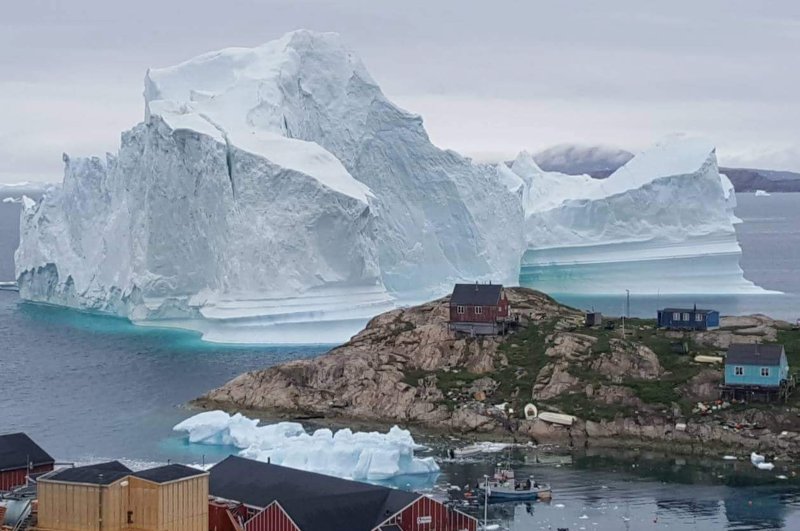Greeland's ice sheet is melting four times faster than previously believed. File Photo by Magnus Kristensen/EPA-EFE
Jan. 22 (UPI) -- The Greenland Ice Sheet is melting faster than scientists had previously thought - a lot faster.
According to a new study published Monday in the Proceedings of the National Academy of Sciences, the Greenland Ice Sheet is now melting four times faster than it had been prior to 2003, National Geographic reported.
The largest amount of ice loss between 2003 to mid-2013 occurred at the southwest region of the world's largest island where few glaciers are located. Most of the ice melt came from from an area where ice loss wasn't known to occur rapidly.
"We knew we had one big problem with increasing rates of ice discharge by some large outlet glaciers," Ohio State University geoscientist and lead writer on the paper Michael Bevis said. "But now we recognize a second serious problem: Increasingly, large amounts of ice mass are going to leave as meltwater, as rivers that flow into the sea."
This melting of the Greenland Ice Sheet is going to cause sea-level rise, he said, adding, "we are watching the ice sheet hit a tipping point."
If all the ice in Greenland melted, the seas level would rise by 7 meters, Bevis told the Columbus Dispatch.
Only a small percentage has so far been lost but it is still worrying, he said.
"The melting process is going non-linear in time. It will accelerate. This means sea-level rise will accelerate," Bevis said. "That is bad news at most coastlines, including most of the Atlantic coast, all of Florida, all of the Gulf Coast of the USA, but also worldwide."
A change in atmosphere and global warming are to blame for the increase, National Geographic reported.
The North Atlantic Oscillation, a natural weather phenomenon that caries warm weather to western Greenland, and an increase in temperature of 1 C is all that is needed to melt the ice there, National Geographic reported.
"It used to be rare to get temperatures above zero degrees, but no longer," he said.
The study examined GPS data of the nation along with data from a previous joint research project by NASA and the German Aerospace Center, CNN reported.
Bevis will continue to monitor ice loss around Greenland in order to predict the situation decades from now, he told the Columbus Dispatch.















